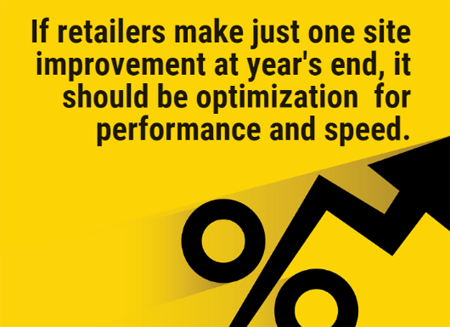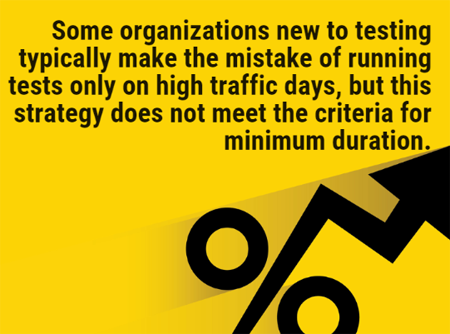5 Winning Strategies to Boost Online Sales Now

There is no sure thing when it comes to achieving online sales success.
Retailers invest a great deal of time and money into creating highly strategic campaigns, offers and sales to outpace and outsell their competitors. The retail market has become so highly competitive, that just offering a coupon or free shipping may not be enough to convince visitors to click that buy button. The upside to a competitive market is that it does breed innovation. Retailers are now devoting more time and resources into ways they can create the best possible customer experience, and in doing so forging a long-term relationship with the customer that includes many return visits and long-term customer loyalty.
Retailers also spend a lot of dollars on planning and executing special campaigns and offers just for the holidays - and rightly so. According to the National Retail Federation (NRF), retails sales in November and December are expected to increase by 3.7 percent to $630.5 billion. The NRF is also forecasting online sales to increase between 6 and 8 percent, or up to $105 billion. It's no wonder retailers spend half of the year planning and preparing for the busiest time of the year. Retailers can turn this higher customer traffic holiday season into a year round growth opportunity if they're really in tune with what their customers like and don't like while continually improve the shopping experience around customer behavior. Site testing and analytics can provide the customer insight retailers need to really make smart decisions concerning the customer experience.
With the holidays nearing quickly, there is one especially important factor that might be drastically reducing your site traffic (and sales) that seems like a no-brainer, but nevertheless, site speed makes the top of the list of five tips to up your customer experience game:
1) Improving site speed is a must
If retailers make just one site improvement at year's end, it should be optimization for performance and speed.

Research shows that 57 percent of visitors will abandon a page that takes three seconds or more to load. That's a very large percentage of overall traffic. First, look for and remove any page tags or unnecessary JavaScript code. This is a major source of diminished site speed and page load times. Also, if your site is graphics heavy, includes multiple videos and other slow-loading content, make it your top priority to streamline pages and decrease the load time.
The tolerance for slow loading pages is low and performance expectations are high, especially during the stressful and hurried holiday season. For impatient Web users, an eye blink is just too long to wait. Fortunately, testing and analytics can help retailers to continually improve their site performance.
2) Test features before they go live
The schedule to create and launch new site features is usually very rushed and last minute. However, what one considers to be a minor change could make a huge difference in the experience they are presenting to customers and which could have a significant impact on customers.
Retailers should make it a policy to always test new or redesigned features prior to launch. To pinpoint potential problems, review test data and react quickly based on that data. Once the problem is defined, create an action plan to fix the issue and re-implement the feature based on whether traffic originated from a desktop or mobile device.
Lastly, if a retailer is planning on launching a big release before a major holiday, make sure he or she tests it against a small amount of traffic first. Nothing can prevent retailers from hitting conversion and sales goals more than a new feature or release that doesn't hit the mark.
3) Test site search for big returns
Research shows that approximately 74 percent of site visitors make their decisions on where to shop online based on how site search functions. Retailers should evaluate if this is their trouble spot by testing site search. There are a vast number of search elements that can be tested, here are a just few to get you started:
a) Web pros will want to build in search term flexibility so that misspelled words will point shoppers to the product they're looking for. Test how search results are displayed and sorted for visitors by changing whether results are viewed by relevance to the search term, customer rating, availability, or showing best-selling products first. This simple-yet-powerful change can make search results more relevant to visitors, and keep them along the path to conversion.
b) Test the number of search results displayed. This will determine whether visitors want more or fewer results than they currently see. Start by testing the number of default search results the site displays per page. If the current default is set to 25, try testing the default at 30 or 35 results and see how it performs against the control. Also, if a retailer has multiple departments, such as home goods, electronics or clothing, keep in mind that visitors may want a different number of results when they search for electronics versus clothing.
c) Test the layout of search results to see whether visitors prefer results in a grid format or list format. Most search results are shown in either a list or grid format that follow a pattern familiar to visitors. However, testing a different layout or a hybrid approach, especially for varying audience segments and departments, can help present a better experience to visitors.
4) Single-Page Applications (SPA) are trending
More and more companies and retailers are using SPA sites for both desktop and mobile sites. SPA sites especially make sense for mobile websites because they deliver an app-like experience in a Web browser and a more fluid and responsive experience for the site visitor.
In addition to the user experience, there are additional benefits to SPA sites. They do benefit from improved site performance after the first request, a reduced number of network requests, and lower bandwidth usage.
5) Testing at the right time is very important
Tests should normally run for at least two cycles (usually two weeks) to generate informative results. It can take two to three visits, or even more, before visitors take action. Further, tests should run until metrics maintain statistical significance for two to three days. Often, tests need to run longer before supporting metrics reach significance or at least stabilize.
Stopping a test early because a single person thinks there is a winner increases the risk for statistically invalid data and may increase time bias from events and/or conversion cycles. However, knowing when to test is equally as important as when to stop testing. Some organizations new to testing typically make the mistake of running tests only on high traffic days, but this strategy does not meet the criteria for minimum duration.

This includes high traffic periods such as during the holidays. If retailers look at a narrow slice of time when there is a higher than normal amount of traffic, such as during November and December, and extrapolating that to the entire cycle, the results will be skewed. Launch tests up to two months before anticipated higher than normal site traffic so there is time to evaluate the data and make changes according to the data.








